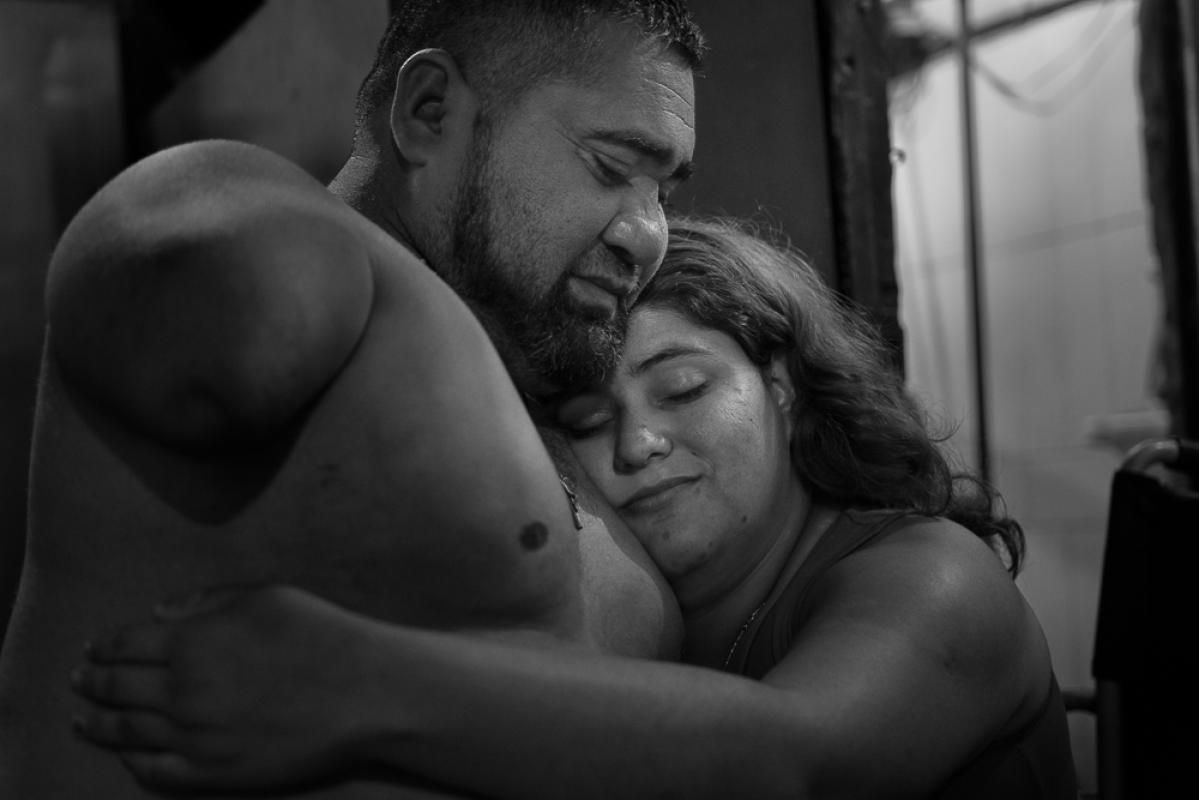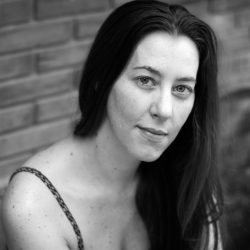Constanza Portnoy
Interview with Constanza Portnoy
Photographer of the Year 2017, category People “Life Force: What love can save”
Jorge, the subject of your entry, is a disabled person. What urged you to capture his resilience amid discrimination?
When I met Jorge I was struck by his way of facing life, his positive thinking, his lucidity and his intense desire to keep going despite adversity. But I could also see that he was a man who is afraid of the outer world and distrusts society from having suffered neglect and marginalization due to his physical disability which was caused by medical negligence of treatment with thalidomide that his mother received one year before his birth, outside of any biomedical safety protocol.
Four years passed before I was able to take pictures of his life. I approached him very slowly, giving him my trust and respect, until one day Jorge decided to open the doors of his world and there I met Vero, his wife, and their little girl Ángeles. I lived with them for more than a year and a half. I discovered that photographing using the classic photojournalism approach with disability victims was deeply cold and very far from the life that Jorge, Vero, and Ángeles were trying to build.
I think that every photographer must know when to put down the camera and look through the eyes and heart, empathizing with the context and the people in front of them, and then take pictures with sincerity, even if that implies turning away from the pressures and expectations that the media imposes through stereotypes of photographs dealing with unfortunate sectors.
How do you earn your subject’s trust to be photographed?
In the first place, you must have a very deep affinity with the cause and the subject you are trying to photograph. Without that, it is very difficult to take photographs with respect and gain people’s trust.
From the start, we must convey the need to narrate in images and communicate a cause. Then it is essential to have patience and not to rush the processes or the situations that you want to photograph. Also, know how to be present, empathize, talk, be part of the place and the life of the people to be photographed.
Did you ever feel the need to keep in touch with your subjects? How about with Jorge?
Always. My pictures start long before pressing the shutter button. First, I like to generate close connections of respect and absolute trust with the characters in my stories. I try deep approaches that allow me to get involved in their worlds. Only when I feel I can build that bridge do I start taking pictures.
Therefore that style generates a bond and a relationship that lasts over time. In the case of the life of Jorge and his family, I am deeply involved in the struggle for the repair of their violated rights, which is why I help them in all their needs and attend meetings with lawyers and representatives who can collaborate in their cause.
What role do you have in society as a photographer?
I see myself as a story writer through my images. If something does not move me then I cannot narrate it–that is my compass. I’m not interested in speculating with the images but interpolate and interrogate continuously through them. The most significant stories for me are those that speak of human relationships overcoming adverse contexts.
Take us back to the time you discovered your passion for photography.
I was born in the 80’s in Buenos Aires, Argentina. During those years, my country went through a horrible military dictatorship. For that reason, I feel that I am part of a generation marked by the permanent search for identity and struggle for human rights.
At age 23, I graduated with honors in Psychology from the University of Buenos Aires.
A little bit by chance, and a little from personal interest, I started working as a psychologist in the area of disabilities. I specialized in this field with my postgraduate studies and worked in ambulatory care centers, both private and public. I worked in neuropsychiatric rehabilitation hospitals, assisting young children with disabilities and elderly people in nursing homes. I soon discovered the shortfalls in the lives of these people and that the daily violation of their rights had become something accepted. The problems that began to concern me were the abandonment of the family as a social or institutional nucleus, the lack of public health policies, and the lack of compliance with disability laws. At the same time, I started researching art therapy resources to promote a better quality of life and that’s when photography crossed my path. I felt a deep love for that world that led me to discover a very powerful tool to communicate, fight, and urge social resistance.
What kind of photography do you identify with?
Definitely, I identify most with documentary research photography.
Can you share with us your overall experience in photography?
I started independently and was self-taught, taking pictures of my family and my daily life. Then my ideology and my identity led me to use photography as a powerful tool for communicating to the public about the social injustices that my country was going through. I went out to the streets and covered the different claims and popular voices. I traveled through some other Latin American countries to get closer to social problems.
Then I immersed myself in research. I took several workshops, always choosing my teachers carefully, and for three years I specialized in documentary research photography. I am currently working on my doctoral thesis of research, where I articulate psychology and photography, addressing the psycho-social impact and the recovery capacity of human beings in front of certain events with traumatic potential.
Are there any photographers that inspire you?
Yes of course. I admire many photographers, but especially the photographs and the works of Adriana Lestido, Alessandra Sanguinetti, Mary Ellen Mark, Darcy Padilla and Sergio Larraín.
What is your dream project? Why?
I want to be able to explore the issue of disability and rights violations. But, I am aware of the lack of sponsors and resources that impacts photographers so realistically it is very difficult to dream about long-term projects.
I hope there are more possibilities and economic resources to support emerging photographers who have something important to say and communicate to society.
What is your advice to emerging photographers?
I still consider myself an emerging photographer, so I would give advice to others who are like me. What I could say is that you must have confidence and security in your own project. You must be strong and not succumb to the pressure and urgency of the media and the banality of popularity. Always try to remember to take photographs to dignify the human condition and respect the situation that will be photographed.

